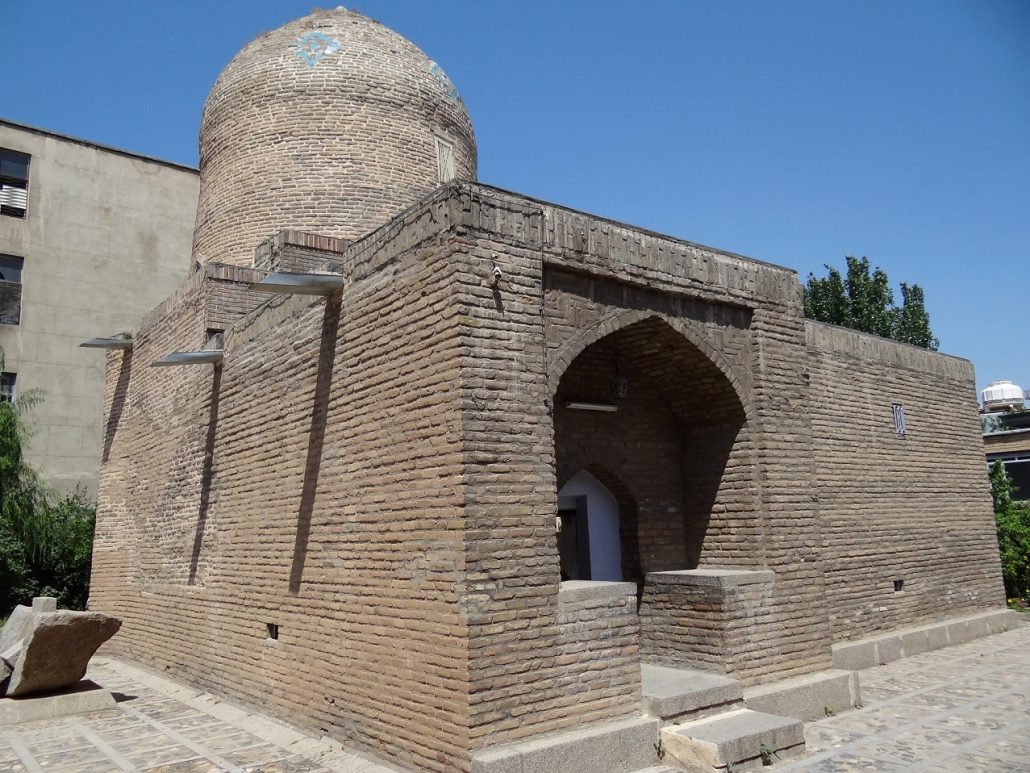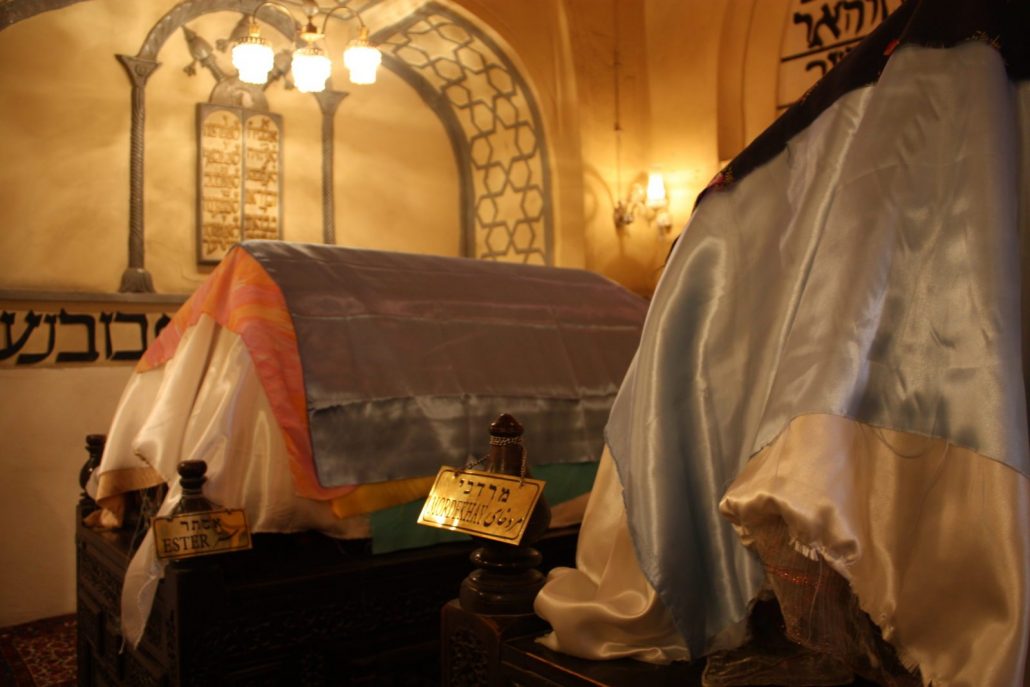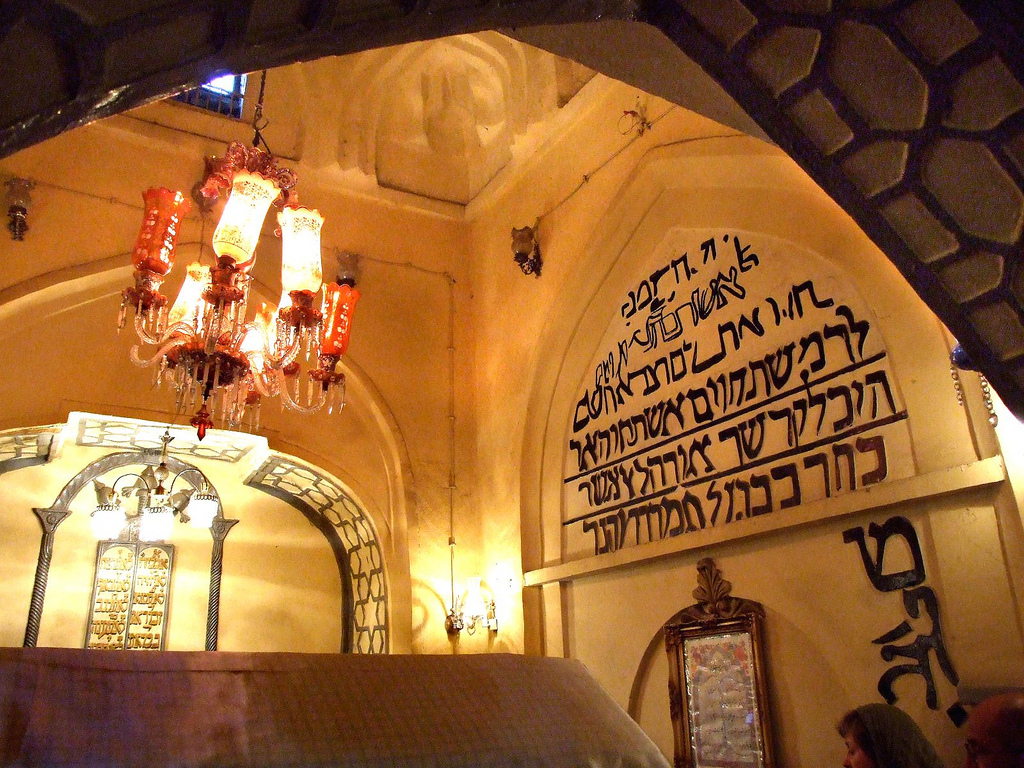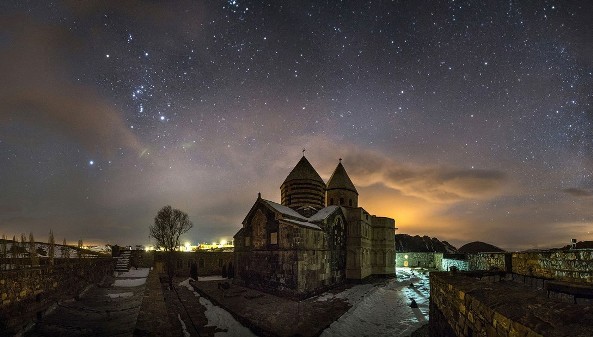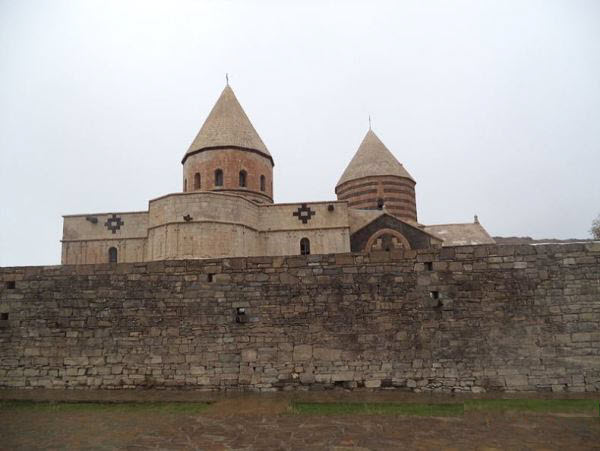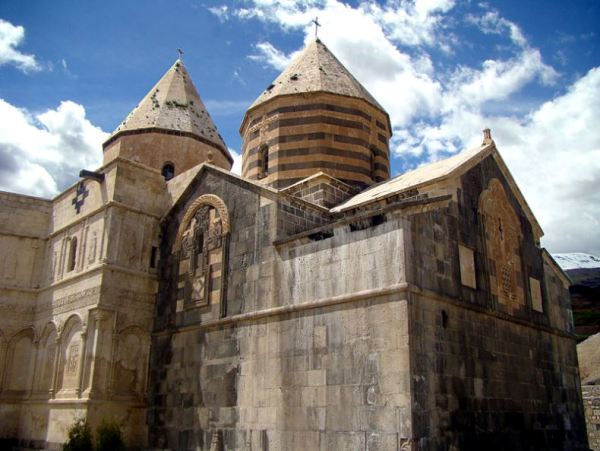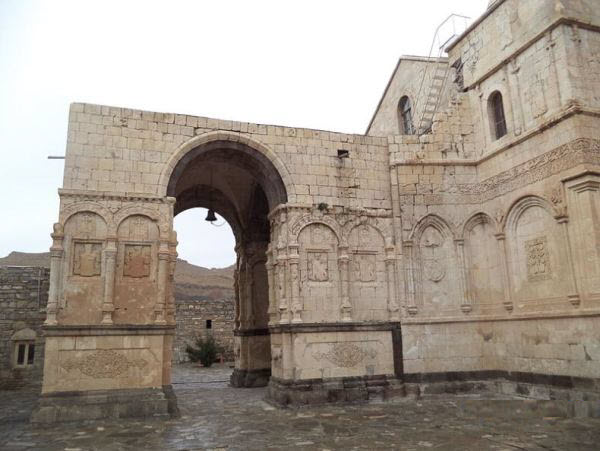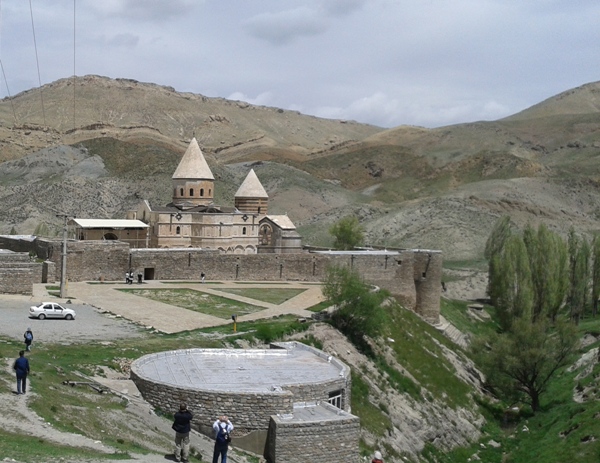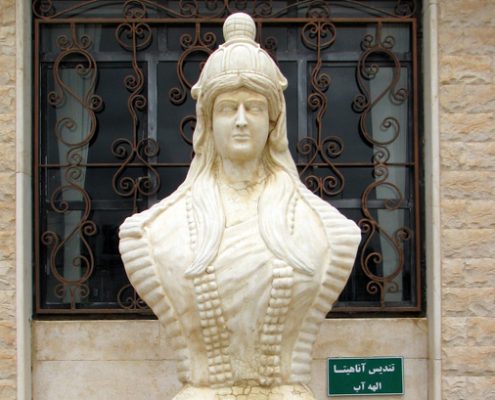
Masoomeh Shrine at Qom
The inhabitants of the ancient eastern world worshiped the Sun, the Moon, stars, rain, water, river, spring, cows, camels, horses, etc as well as the opposite extremes such as darkness, lightning, clouds, winter, snakes, eagles, wolves, etc to be away from their harms.
Iranians were influenced by Semites, Babylonians and Assyrians’ incantation sayings, magic and spells. Zarathustra rose against such superstitions and the beliefs of Iranian plateau local people like worshiping the Sun, the Moon and stars.
Ancient Iranians believed in dualism, life after death and rewards for human deeds. Aryans also believed in animism and fetishism. The influences of these beliefs are still observed in modern-day Iranians’ beliefs and superstitions.
Various Nations’ Beliefs
What we surely know about Elamites’ religion is the fact that they believed in a great god called Shushinak. Scythians were highly civilized and religious who believed in one heavenly power, but had various idols as well.
Aryans believed in a series of good beings that had presented the treasures of nature to human beings the most important of which were light and rain. They also believed in a series of bad beings struggling with good ones and trying to block humans from getting to prosperity.
In general, Aryans’ beliefs led them toward a better code of ethics compared to Babylonians and Assyrians. They relied more on a combination of human endeavor and action with honesty and righteousness. Aryans worshiped Mithra (the goddess of the Sun), Ashi (the goddess of fertility and marriage), Verethraghna (the god of attack and victory), Mazda (the great god of eastern and western settled, civilized Iranians), and several minor gods and goddesses.
Medes’ religion was very much identical with Hoorians’ and Assyrians’, especially according to the sphinxes discovered in their regions. Magi held religious ceremonies for Medes and later for Persians.
Religions during Pre-Islam Iran
In Achaemenians’ era, under Persians, all subject nations were free to believe in any religions and there was not any religion recognized officially by kings. The majority of people believed in four holy elements: light, water, earth and air. When Cyrus the great defeated Nebuchadnezzar, the captive Jews of Babylonia were freed by the Persian king and rendered helps to go back to Jerusalem to rebuild their temple. Undoubtedly, Jews owed their survival to Iranians. According to Old Testament, a group of them migrated to Iran at about 8th century B.C. Xerxes’ minister, later, prosecuted them.
Parthians’ religion was a combination of the religions of pre-Achaemenian Aryans, Zarathustra and Greek-influenced Seleucids. Mithraism was more popular among them.
After Alexander’s invasion to Iran and Seleucid dynasty till Parthians’ period, Buddhism found followers in Iran and stopped being practiced toward the end of Samanids.
During Sassanians, kings recognized Zoroastrianism as the official religion. The holy book of Zoroastrians, Avesta, was destroyed by Arabs’ invasion, but later could have been partly recollected and rewritten. It was written in Pahlavi. Later, it was interpreted in a book called Zand. Pazand was also written later to explain Zand in Dary Persian. All through the history, Zoroastrians have believed in three principles: good thought, good words and good deeds.
During the first half of the 3rd century A.D, an Iranian noble man called “Mani”, started Manichaeism. He declared his mission and began from Persia and found some followers from Syria, Egypt, North Africa to France and Spain. In the 2nd half of the same century, he was killed in Sassanians’ prison. He wrote six books in east Aramaic and Pahlavi.
“Mazdak” started his religious, political movement around the end of 5th and the beginning of 6th centuries A.D. He was killed when he had been taking part in a royal discussion meeting. His death won plenty of respect for his religion as well as Zoroastrianism.
At the end of Sassanians’ era, some other Jews had joined the ones in Iran. Christians grew in number during Parthians and found many followers, especially in Armenia during Sassanians and Romanians.
“Zorvanism”, the belief in the god called Zorvan, is not that much different from Zoroastrianism. It was practiced simultaneously with Zoroastrianism during Sassanians. This religion, like Manichaeism, Mazdaism and Christianity, was banned during Sassanians and the followers were prosecuted.
Religions during Post-Islam Iran
After Arabs’ invasion, the Iranian followers of Zoroastrianism were divided into three groups:
1. Those who converted to Islam,
2. Those who did not convert and migrated to India, and
3. Those who stayed in their homeland and kept believing in their own religions.
Zoroastrianism has gone through many changes since 14 centuries ago, but the main doctrine has remained intact.
There were two large mighty powers in the world when Islam emerged: Romans and Iranians. Sassanians were defeated by Arabs bringing a new religion, Islam.
After Mohammad was inspired by Allah to invite people to worship one true God, he obeyed God’s order and followed it for three years behind scenes.
Later he invited people in the public. After successive years of hard life and prosecutions, he decided to move from Mecca to Medina. Eight years later, he moved back to Mecca leading a large army of Muslims.
During his life, Mohammad united Arabs in the Arabia peninsula and founded a religious government that later extended its borders eastward, westward and northward.
At last, Islam has turned to be one of the most popular religions all over the world. The majority of the worlds’ Muslims are Sunni Muslims while Shiites are the minority. The followers of the latter branch form the majority of Muslims in Iran at present.
Later, under Mongols, Christians were well liked by early Ilkhanid kings, but latter kings prosecuted them. Nestorianism started in Ephesus, grew at the border area between Roman and Iranian Empires, found many followers in Iran and put a strong impact on the Christians of next centuries in Iran.
Mongols’ invasion to Iran ended in a kind of freedom in choosing religion. As a result, Abbasid caliphate collapsed in Iran and Shiite branch started to grow. Mysticism also started to attract many during Ilkhanid dynasty.
During Safavids, Zoroastrians were forced to pay special taxes, because they had not converted to Islam. In addition, some taxes placed on their business activities were a lot more than those placed on Muslims.
The Shiite branch had been divided into two branched, 12-Imam Shiites and 7-Imam Shiites. The first branch grew stronger and stronger up until Safavid period when this branch was announced as official branch of Islam in Iran. This happened when the majority of the Iranians were Sunnis. But, since Ottomans were Sunni, the first Safavid king, Ismail wanted to unite the whole nation against the foreign threat. Inside the country, Jews and Zoroastrians were not treated fairly. Christians enjoyed a little more advantages. Later during shah Abbas I, a large number of Christians migrated to Iran.
Under Afsharid dynasty, Nader Shah inherited an era of politics mixed with religion. He tried to win people’s hearts by paying respect to Shiite doctrine and the holy shrine of eight Imam, Reza, in Mashad. During Afsharid dynasty, Kashan turned into a small Jerusalem for Jewish Iranians and their clergymen. Business also flourished the town and lots of wealth was produced during Nader.
Karim Khan, the Zand king, rendered more freedom to non-Muslims. He respected religion, but did not let Muslim clergymen be seriously involved in politics.
Iranian society under Qajar dynasty was religious-oriented. Family morale, business and social interactions were all based on Islam. More than any other periods in Iranian history, Qajar kings paid plenty of attention to Imam Hossein’s martyrdom and his commemorative ceremonies.
Zoroastrians and Christians were not under much governmental pressure, but Jews were not treated likewise. They could have been forced easily to pay more and more taxes.
The Shiite branch of Islam has been divided into many sub-branches itself, but today, Twelvers are the majority of Iranian Muslims. The other branches are diminishingly decreased in number.
Conclusion
As one can simply conclude, religion has always played a key role in Iran’s history, both in people’s attitudes and in the ruling system of governments in various periods of time. Almost every aspect of Iranians’ lives was under direct or indirect impact of their religion. This is a concrete fact easily observed in every aspect of Iranians’ lives.
